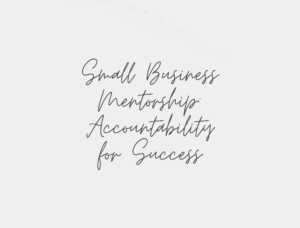Introduction
Creating a Career Growth Plan for Employees improves team performance, morale, and retention. A full program is needed to help your workers discover their strengths, professional goals, and development areas. This strategy guides their professional growth in your firm and helps them succeed. It encourages continuous learning and progress, creating a skilled, committed, and happy staff.
Assessment Stage: Evaluating Current Employee Skills and Goals
Identifying Current Skillset
This means evaluating each worker’s skills, knowledge, and abilities. Self-evaluations and comments from others are helpful at this stage. They help you figure out what your staff is good at and what they are bad at.
Understanding Employee Aspirations
To find out what workers want from their jobs, you can either talk to them one-on-one or send them polls where they can remain anonymous. Then, these goals can be made to fit with the purpose and vision of the company.
Performance Reviews
When you review workers’ past work, you can tell what they can do now. Workers can examine this and the parts they want to play and see where they need to improve.
Job Role Analysis
When you review workers’ past work, you can tell what they can do now. Workers can examine this and the parts they want to play and see where they need to improve.
Identify Training Needs
The goals and skills needed can help determine what training is needed. The plan for learning and growth will be based on this.
Setting Clear Objectives: Define Career Goals with Employees
Collaborative Goal Setting
Help your employees choose what they want to do for a living. Working together ensures the goals can be reached and are in line with their own.
SMART Goals
Use the SMART method to ensure your goals are clear, measurable, attainable, and important and have a due date. This way, they can see what they need to do and stay on track.
Alignment with Business Objectives
Could you ensure that your employees’ job goals align with your company’s strategic goals? This would help the person and the business grow.
Flexibility
One important thing to remember about job goals is that they shouldn’t be set in stone. Tell your workers their goals should change as they gain more knowledge, find new opportunities, or get more experience.
Regular Review
Goals should be reviewed and judged often to ensure they are still important and useful. This will encourage your employees to stay on track and keep trying to improve.
Encourage Skill Development
To help your employees improve their jobs, make them learn new things. This could be done by giving people the chance to work on difficult projects, holding classes, or giving them training.
Skill Development Programs: Identifying Skill Gaps and Implementing Training Initiatives
Conduct Skills Gap Analysis
Review of performance, job role analyses, and what workers want to achieve can help you find skill gaps. You can find out what training you need the most by doing a full skills gap study.
Curate Customized Training Programs
Training programs—in-person classes, workshops, or online lessons—can fill in the skill gaps that have been found.
Implement Training Initiatives
Once his plans have been made, it’s time to carry them out. Ensure your employees can learn from and enjoy how you teach them. This could mean getting help from a teacher, using online tools to learn, or a mix of the two.
Encourage Peer-to-Peer Learning
Talk about what you know with people in the business. Get workers who know more to teach workers who don’t know as much and share what they know. Learning this way with other people, in addition to going to school, can be helpful.
Provide Resources for Continuous Learning
Give people the tools they need to keep learning. This could mean access to online libraries, paying to join trade magazines, or receiving school money.
Measure Training Effectiveness
How well do the regular training plans work? This will help you determine whether the program is hitting its learning goals and filling in the skill gaps. It will also help us determine how to improve future training classes.
Continuous Monitoring of Skill Development
Give your staff tests often to see how they’re growing. You may need to change the training plans to account for any new skill gaps.
Reinforce Training
Use the skills you learned in training to strengthen daily tasks and responsibilities. Give your employees chances to use what they’ve learned in real life.
Recognize and Reward Progress
Thank your workers for working hard to learn new skills and use them. This might make them want to keep learning and do their best to get better.
Mentorship and Coaching: Establishing Mentorship Programs and Providing Regular Coaching Sessions
Mentorship Program Design
Set up a structured mentoring program that pairs employees with less experience with employees with more experience. This will let everyone on the team share what they know and help the younger people on the team get help.
Mentor Selection
Choose teachers based on what they know, how long they’ve been teaching, and their “soft skills.” A good guide not only knows a lot about their subject, but they also know how to prepare and lead other people.
Defining Mentorship Goals
What do you and your guidance partner hope to gain from being friends? This could mean improving a skill, doing a better job, or being more confident.
Providing Training for Mentors
Mentors need to be taught how to help the people they work with. There might be ways to teach, talk to people, and make notes.
Regular Coaching Sessions
Could regular one-on-one teaching sessions be set up? These would allow you to discuss what went well, what worries you, and how you want to improve your learning.
Adjustable Mentorship Program
Be open to change in your mentoring program. Each student will have different needs and growth levels, and the tool must be changed to keep it useful.
Encourage Peer Mentorship
Encourage a culture where people can learn from each other. This will make the workplace more open and help the team do its job better.
Feedback Mechanism
Mentors and mentees should be able to share their stories and offer ways to improve. Over time, this will improve the coaching and teaching program.
Tracking Progress
Please monitor the training program and let me know how it’s going. With what you’ve learned, you can change the program as needed.
Recognition and Reward
Mentors and mentees should both be recognized and rewarded for their work. This keeps them going and excites the company’s employees about the training program.
Creating a Growth-Focused Culture: Instilling an Environment that Fosters Professional Development
Emphasize Learning
Get people to think that they should always be learning new things. Encourage your employees to learn new things, improve what they already know, and keep up with changes in the field.
Encourage Innovation
Ensure employees can say what they think, try new things, and learn from their mistakes. This way, you might come up with more unique and new thoughts.
Transparency
Everyone should be able to see the company’s goals and strategies and how workers can help it meet them. This should clarify to employees how their work affects the business’s performance.
Promote Collaboration
Tell everyone to work together to help the team. This will help people get to know each other, share what they know, and learn from each other.
Recognition and Appreciation
Thank your employees often for their hard work, progress, and achievements. This can make workers feel better about themselves and motivate them to improve.
Personal Development Plans: Empowering Employees to Take Charge of Their Growth Journey
Defining Personal Development Goals
Tell your employees to write down what they want to improve about themselves. Some may want to get better, learn new skills, or prepare for a future leading role.
Creating Personal Development Plans
Help your employees make good growth plans. They should write down any projects, training, or teaching they will do and the steps they need to take to reach their goals.
Regular Review of Development Plans
Please review your growth plans often to assess their progress and make any necessary changes. This will help ensure the plans work and align with the employee’s new career goals.
Support and Resources
Giving your workers the help and tools they need to reach their personal development goals will help them achieve them. This could mean being able to learn at work, taking classes online, or getting paid to get skilled training.
Mentoring and Coaching
Every worker should have teachers or coaches who can help them grow as people. They can give workers useful feedback, help workers solve problems, and stay on track with their plans.
Promoting Work-Life Balance: Prioritizing Employee Well-being for Sustained Productivity and Engagement
Flexible Work Schedules
Let your workers choose their hours so that you can meet their needs. Some of these are the freedom to work from home, set your hours, or cut the length of your work weeks.
Encourage Regular Breaks
Please stress how important it is to take breaks at work to rest and then get back to work. This might help people get more done and avoid burnout.
Support for Personal Pursuits
It’s good for people to have interests and hobbies outside of work. This makes them happy and helps them think of new ways to do their job.
Promote Healthy Habits
Set up your workplace so that healthy habits like working out regularly, eating well, and getting enough sleep are easier. These habits can make workers feel better, give them more energy, and help them focus better.
Employee Assistance Programs
Give your workers Employee Assistance Programs (EAPs) that can help them with therapy or legal issues that are preventing them from working.
Measure Work-Life Balance
Please regularly ask your employees about their work-life balance. Based on their responses, you may need to change your rules and procedures.
Tracking and Measuring Progress: Ensuring Effective Implementation of Development and Work-Life Balance Initiatives
Determine Key Performance Indicators (KPIs)
With the right KPIs, you can see how well your efforts to help your workers grow and balance work and life are going. This might include things like the number of engaged employees, the level of productivity, or the rate at which employees stay with the company.
Regular Surveys and Feedback
Ask workers how happy they are with the projects and what they think could be done to make them better regularly.
Track Employee Participation
Watch how much your workers participate in programs that help them grow and balance work and life. A lot of people taking part can mean that these programs are working.
Monitor Progress Toward Goals
Look at your employees’ personal development plans occasionally and see how they do with their goals. This can help you figure out how well the plans for growth work.
Evaluate Impact on Performance
Could you determine how these initiatives have affected your employees’ general work and productivity? If these places improve, the projects might work.
Adapting to Changing Needs: Ensuring Continual Relevance and Effectiveness of Development and Work-Life Balance Initiatives
Continual Learning and Updating
Take the idea that you can always learn and get better. Always know what’s new and best in work-life balance and employee growth to ensure your programs remain useful and effective.
Open to Innovation
You should be open to new thoughts and methods. Have your workers discuss how they think the projects they’re working on can be improved.
Adapting to New Technologies
Use new tools to improve and speed up your projects. For example, new tools could be used to keep track of progress or virtual reality could be added to training to make it more real.
Responding to Employee Feedback
Listen to what your employees have to say and act on their thoughts. Workers should be able to tell you when they think some projects need to be updated or changed, and you should do what they say.
Regular Review and Adjustment
Every day, look over your work. Check to see how well it’s doing and make changes as needed to meet the changing needs and wants of your workers.
Conclusion
Finally, creating a Career Growth Plan for Employees promotes a balanced work environment and continuous learning. Organizations may boost employee engagement and performance by assessing progress, reacting to changing demands, and emphasizing personal growth and work-life balance. Effective change management and proactively anticipating changing demands keep programs adaptable and relevant. A well-structured career advancement plan for employees leads to a more engaged team, improved retention rates, and a healthier, more productive work environment.





